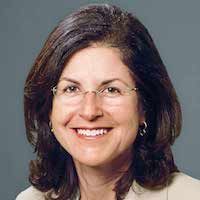Small Practices, Much Lower Physician Burnout
An NYU study showed that physicians at small, independent primary care practices report much lower rates of burnout—13.5% compared to the 54.4% national average.

Donna Shelley, MD
Physicians who work in small, independent primary care practices (SIPs) report much lower levels of burnout compared to national averages—13.5% versus 54.4%—according to a study by researchers at the NYU School of Medicine.
“The biggest surprise is the main finding, which is the incredibly low burnout compared to national averages,” said Donna Shelley, MD, Professor, Departments of Population Health and Medicine, NYU Langone Health, one of the study authors.
The national problem of burnout among physicians is urgent, as a talk earlier this year at the American Psychiatric Association’s annual meeting highlighted. Darrell G. Kirch, MD, the president of the Association of American Medical Colleges polled the room of health care professionals, asking how many of them had treated or known a colleague that met the diagnostic criteria for burnout.
Kirch noted that “virtually every person in the room” raised their hand. For this reason, the NYU team’s research is especially needed.
"It's important to study the group that's NOT showing high burnout to help us create environments that foster lower burnout rates,” said Shelley in a statement. “The good news is that a culture and systems can be changed to support primary care doctors in a way that would reduce the factors that are leading to burnout."
Most of the 174 SIPs included in the study were solo provider practices (66.9%). Of the 235 providers, 204 were physicians and 31 were PAs or NPs.
To measure burnout, providers were asked “Using your own definition of burnout, please indicate which of the following statements best describes how you feel about your situation at work?” Possible responses ranged from “I enjoy my work. I have no symptoms of burnout” to “I feel completely burned out and often wonder if I can go on practicing. I am at the point where I may need some changes.”
A focus of the study was adaptive reserve, a measure of the nature of leadership, communication practices, trust and teamwork, collective efficacy, and culture of learning at the practice.
Drawing up on data collected in the HealthyHearts NYC trial, the study authors found that a higher adaptive reserve score for the SIP was associated with lower changes of burnout (OR = 0.12, 95% CI 0.02-0.85, p = 0.034). Other practice characteristics, such as serving a medically underserved area, were not associated with lower burnout.
“In the interview with doctors, we found that they value their autonomy,” said Shelley. However, she cautions against painting a universally rosy picture of working at a small practice. The small practices, with fewer than 5 providers each, do face immense challenges.
“There are lots of stresses—this is not all hunky dory. They’re not part of a large system that takes care of them or takes care of the bills and the billing. They deal with EHR vendors and insurance companies—all things that are taken care of when you work in a larger system,” said Shelley.
The authors hope that the information provided by this study will contribute to burnout reduction impacting SIPs as well as larger medical systems.
The study did have limitations, such as being limited to SIPs in New York City. Additionally, Shelley mentioned that many of the physicians involved in the study had participated with previous interventions designed to help SIPs, potentially affecting the baseline levels of burnout.
“Our low burnout rate may reflect the fact that those who were burned out from running a small practice may have left to join a larger system and so those that are still in these practices are the ones who are happy there,” added Shelley, reflecting on the limitations of the study.
The study, “Correlates of burnout in small independent primary care practices in an urban setting,” is published in the Journal of the American Board of Family Medicine.